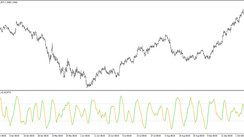Understanding the Lucrative World of Commodity Trading
Navigating the rewarding but challenging landscapes of commodity futures and options markets presents a multitude of opportunities for profit derived from fluctuations in prices. The avenue to prosperity often lies in employing tried and tested trading strategies.
Novices in commodity trading are encouraged to embark on a journey of understanding the market intricacies, becoming acquainted with basic trading commodities, and experimenting with rudimentary strategies prior to investing their valuable capital.
Crucial Takeaways for Commodity Trading Beginners
- Most commodity trading strategies rely on technical analysis, which employs metrics such as moving averages, to determine the optimum times to either enter or exit a position.
- Range trading is a strategy that advocates purchasing when prices are at their lowest and selling when they're at their peak. However, timing is key.
- Breakout trading is an approach suitable for markets with robust trends. It involves buying just before prices skyrocket and selling just before they plummet.
- Fundamental trading strategies are more reliant on market fundamentals than technical trading dynamics to dictate buying and selling decisions.
Kicking off Your Commodity Trading Journey
Keeping abreast of the financial news, devouring commodity newsletters for the latest advice, and finding the right trading platform is a good starting point for aspiring commodity traders. This will provide you with insights into market dynamics and invaluable skills for successful commodity trading.
Below, we explore three well-regarded commodity trading strategies ideal for novices. They, along with several other strategies, utilize technical analysis to track price fluctuations, moving averages, and a range of technical metrics that can be easily accessed via a technical charting platform.
Remember that each trading strategy comes with its unique method for integrating technical indicators and offering trading advice. Strategies can be mixed and matched for comprehensive decision analysis. Balancing a multitude of factors often yields the best results, although it increases complexity, so traders might opt to focus on one or two main signals.
Range Trading: Capturing Profits from Peaks and Troughs
Range trading is a universally employed strategy across financial markets. Typically, it revolves around Bollinger Bands or other similar tools that chart support and resistance levels. It involves buying when prices are at the lowest (support level) and selling when prices are at the peak (resistance level).
Supply and demand heavily drive these peaks and troughs. Commodity prices usually reach their zenith when surging demand pushes prices to new highs. When traders feel the price has topped out, they expect a drop.
Conversely, prices plunge to the bottom of the range when selling increases and supply exceeds demand. Understanding when a market is oversold or oversupplied is crucial because it signifies that a commodity's market price is below its expected value, and a price rebound is likely.
Indicators such as the relative strength index, stochastics, momentum, and rate of change can help identify overbought or oversold situations, especially when trends are hard to pinpoint. However, caution is advised as markets can remain oversold or overbought for prolonged periods, and support and resistance levels are merely estimations.
Breakouts: Capitalizing on Dramatic Price Movements
A breakout strategy is employed to leverage short-term price movements. It aims to profit from buying just before prices surge significantly or selling just before prices drop substantially.
While this strategy is often used in conjunction with range trading, it's not limited to such scenarios. Breakouts can occur anytime, and being able to identify one could enable a trader to profit from significant price movements.
The logic behind trading breakouts is straightforward: a market can't maintain its trend without reaching new highs or new lows. This strategy works best in markets with robust and enduring trends. It doesn't matter if the trend is bullish or bearish; the key is to buy at new highs and sell at new lows. However, this strategy struggles in markets unable to establish strong, short-term trends.
Fundamental Trading: Merging Technical and Fundamental Indicators
Fundamental trading strategies often lean on both technical and fundamental indicators. Unlike technical trading dynamics, these strategies focus more on market-specific factors.
For instance, a trader might buy soybeans if dry summer weather forecasts lead to a smaller harvested crop, hence expecting a rise in demand. Or if China suddenly increases its oil demand, traders would anticipate a surge in prices and could look to capitalize on this news by taking a long position.
Fundamental trading, however, requires a significant investment of time and patience. It can be more complex and slower to bear fruit compared to identifying technical patterns, which can provide quicker gains when correctly recognized.
Trend Following: Riding the Wave of Market Momentum
Trend following is a commodity trading strategy that emphasizes tracking market trends and leveraging momentum to secure profits. This strategy operates under the assumption that commodities tend to move in a particular direction over time, either upwards or downwards.
In trend following, the key is to identify the start of a trend and commit to it. Traders buy when the trend is upward (bullish), anticipating that prices will continue to rise, and sell when the trend is downward (bearish), expecting prices to keep falling.
Trend followers employ various technical indicators to identify trends and decide on entry or exit points. These indicators may include moving averages, momentum oscillators, and relative strength index (RSI). For instance, moving averages can help identify a trend by smoothing out price fluctuations, making it easier to spot trends over time.
One distinct feature of trend following is that it is indifferent to the underlying reasons behind market movements. Whether a change in price is due to political instability, weather patterns, or shifts in demand and supply, trend followers focus solely on what the price is doing, rather than why it's doing it.
However, it's important to remember that trend following isn't foolproof. No trend lasts forever, and there is always a risk that the trend might reverse just as you're jumping on board. This strategy requires discipline, patience, and the willingness to let go of a position when the trend changes.
Wrapping Up: Choosing Your Path in Commodity Trading
Embarking on your journey into the world of commodity trading, you will encounter a diverse array of strategies, each with its own merits and challenges. Whether it's the calculated timing of range trading, the dramatic movements in breakout trading, the insightful blend of indicators in fundamental trading, or the momentum-centric trend following, it's essential to choose the one that resonates most with your trading goals and style.
Remember, these strategies are not mutually exclusive, and you can employ a mix that aligns best with your market understanding and risk tolerance. It's about crafting your unique trading blueprint, guided by knowledge, marked by experimentation, and refined by experience.
As you traverse the trading landscape, don't lose sight of the fact that mastering commodity trading is not an overnight achievement. It's a continual process of learning, analyzing, adjusting, and, above all, understanding the inherent risks. So take your time, learn from every trade, and most importantly, enjoy the journey!





